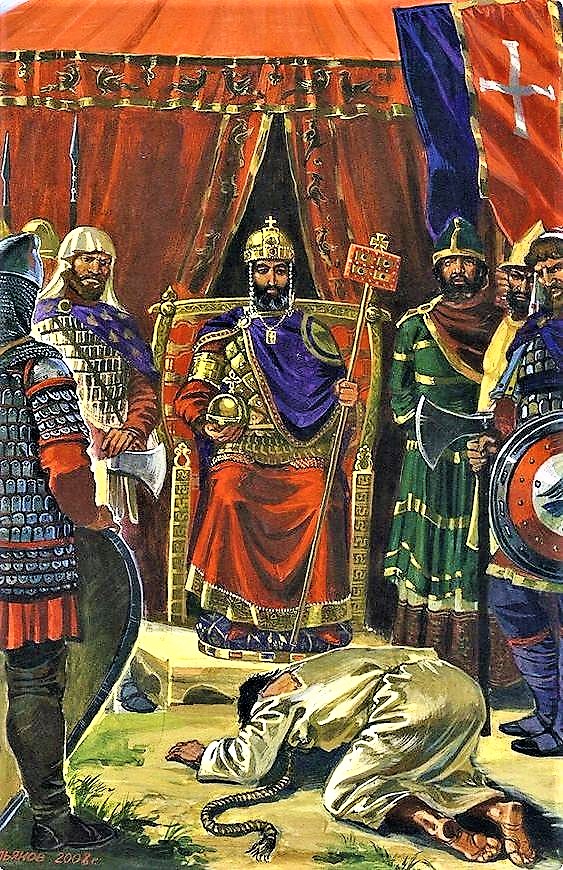Italy (c. 1150)
Found in the Vatican Library, Rome.
Artist: Unknown
Manuel I Komnenos was a Byzantine Emperor of the 12th century who reigned over a crucial turning point in the history of Byzantium and the Mediterranean. His reign saw the last flowering of the Komnenian restoration, during which the Byzantine Empire had seen a resurgence of its military and economic power, and had enjoyed a cultural revival.

Curious looking image
Eager to restore his empire to its past glories as the superpower of the Mediterranean world, Manuel pursued an energetic and ambitious foreign policy. In the process he made alliances with the Pope and the resurgent West. He invaded the Norman Kingdom of Sicily, although unsuccessfully. The passage of the potentially dangerous Second Crusade was adroitly managed through his empire. Manuel established a Byzantine protectorate over the Crusader states of Outremer. Facing Muslim advances in the Holy Land, he made common cause with the Kingdom of Jerusalem and participated in a combined invasion of Fatimid Egypt. Manuel reshaped the political maps of the Balkans and the eastern Mediterranean, placing the kingdoms of Hungary and Outremer under Byzantine hegemony and campaigning aggressively against his neighbors both in the west and in the east.
However, towards the end of his reign Manuel’s achievements in the east were compromised by a serious defeat at Myriokephalon, which in large part resulted from his arrogance in attacking a well-defended Seljuk position. Although the Byzantines recovered and Manuel concluded an advantageous peace with Sultan Kilij Arslan II, Myriokephalon proved to be the final, unsuccessful effort by the empire to recover the interior of Anatolia from the Turks.
A modern rendition of the Byzantine Emperor Manuel I Komnenos below

Ancient Faces: Romano-Egyptian Mummy Portrait of a Bearded Man
Called ho Megas by the Greeks, Manuel is known to have inspired intense loyalty in those who served him. He also appears as the hero of a history written by his secretary, John Kinnamos, in which every virtue is attributed to him. Manuel, who was influenced by his contact with western Crusaders, enjoyed the reputation of “the most blessed emperor of Constantinople” in parts of the Latin world as well. Modern historians, however, have been less enthusiastic about him. Some of them assert that the great power he wielded was not his own personal achievement, but that of the dynasty he represented; they also argue that, since Byzantine imperial power declined catastrophically after Manuel’s death, it is only natural to look for the causes of this decline in his reign.
Thracian Treasures: Golden Phial & Amphora With African Faces Found In Bulgaria, Europe?

Please keep up the good work to recover the real history and anthropology. Great work, Sola.